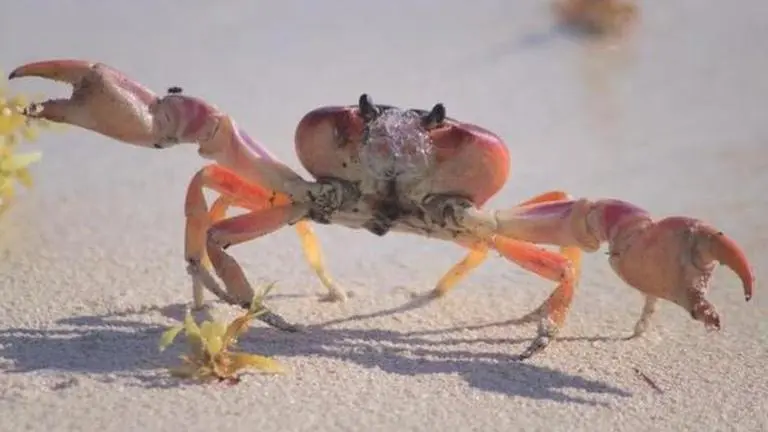Updated 2 July 2022 at 12:57 IST
Scientists discover new crab species which uses other creatures' hair to escape predators
Scientists have discovered a new type of crab that disguises itself with hair scraped from other sea creatures, it belongs to Dromiidae family.
- Entertainment News
- 2 min read

Adding to the array of scientific discoveries in recent times, a group of scientists have discovered a new type of crab species that disguises itself with hair scraped from other sea creatures. Also, the experts found that the crab uses its hair to safeguard itself from other predators. Moreover, the "fluffy" creature has been named 'Lamarckdromia beagle'. According to USA Today, the crab species has been named after famed biologist Charles Darwin's ship.
The creature belongs to the Dromiidae family, which is commonly referred to as sponge crabs. Moreover, it was discovered by a family off the coast of Western Australia and they sent it to the local museum for identification, according to a report in The Guardian. A curator of crustacea and worms at the Western Australian Museum, Dr Andrew stated, "The sponge or ascidian just keeps growing and will mold to the shape of the crab's back", as per The Guardian. "It will never attach ... it forms a nice cap that fits quite snugly to the top of the crab", he added.
A new type of crab 'Lamarckdromia beagle' belongs to sponges crab
For the unversed, Dromia personata, also known as the sponge crab or sleepy crab, is a species of crab normally found in the North Sea, the Mediterranean Sea, and connecting parts of the Northeastern Atlantic Ocean. Like most other epibenthic crustaceans, the biomass of this species is especially dense on the Mediterranean continental shelf. Meanwhile, speaking about the crabs’ mannerisms, in an interview with ABC, he said, “They have an unusual behaviour of carrying around a piece of living sponge.” He added, “You will find them in shallow water and down to a few hundred meters, commonly around dwarf pylons or anywhere with substantial growth of sponges."
Furthermore, Dr. Hosie said, "Some of the compounds that these sponges are producing are very noxious". The sponges can be bigger than the crab itself, and also provide a chemical deterrent. "There's not a lot of active predators that would be interested in munching through a sponge just to get to a crab", he added.
Advertisement
Image: Unsplash
Published By : Purnima Mishra
Published On: 2 July 2022 at 12:52 IST
